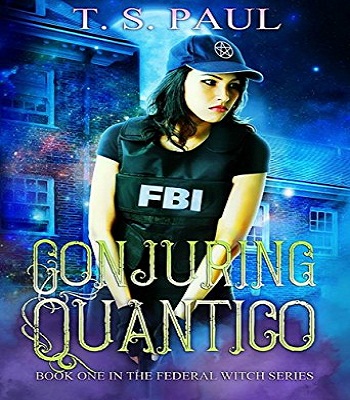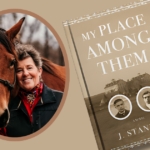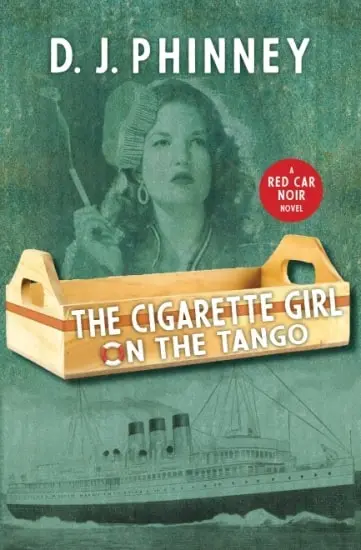
Book 1: The Anaheim Beauties Valencia Queen
Book 2: The Cigarette Girl on the Tango
Book 3: The Society for the Complete Extermination of Ethan
Authors:
D.J. Phinney
Amazon URL: https://www.amazon.com/dp/B08R67QC7T?binding=paperback&ref=dbs_dp_rwt_sb_pc_tpbk
Book Trailer Link:
Website URL:
Book Synopsis:
Phinney’s first book, The Anaheim Beauties Valencia Queen, incorporates these facts behind the heavy presence of the Klu Klux Klan in Anaheim during the early and mid-1900’s. The book takes readers back a century, to a time when the country was recovering from WWI, orange groves dominated southern California, Hollywood was a mecca for beautiful young women, and the Klan seemed to stand for God, family, country, and the American Way. With stealth, in 1924 the Ku Klux Klan took over Anaheim’s city council plus ten of eleven slots on the police force. In a Roaring 20’s citrus-packing suburb of 10,000 people, where the ethics of Jay Gatsby collide with those of Elmer Gantry, an aspiring high school pitching phenom, fatherless Dean Reynolds, falls under the spell of drop-dead-gorgeous Helen Webber and her agenda-driven, rich father.
In Phinney’ second book, The Cigarette Girl on the Tango, he uses the backdrop of the loophole organized crime used to offer legal gambling in the Los Angeles area in the 1920’s. Phinney uses this piece of gambling history in his book when he unveils another hushed-up chapter of California history. In the depths of the Great Depression, the Santa Ana River floods of 1938 roar through Orange County, destroying Atwood, a river-edge bracero hamlet. 19-year-old Willie O’Toole searches for his missing love, Elena Valenzuela, almost certain she has drowned. At a tamale shop near the western edge of rural Santa Ana, he meets Loretta, who looks exactly like Elena without her innocence. She claims to be Elena’s sister. But some facts aren’t adding up. Then Willie learns Elena’s corpse washed up onshore at Seal Beach, then called “Sin City”, the red-light district and gambling mecca of Orange County.
The third book in the series, The Society for the Complete Extermination of Ethan Frome, harkens back to 1971, when the Vietnam War had the U.S. population polarized. The story captures the heightened sense of anxiety and uncertainty that permeated society through a coming-of-age historical fiction novel that mirrors our current age of privilege and shaming.

Author Bios:
A Southern California native with a passion for history and construction, I graduated from Rensselaer Polytechnic with a master’s in engineering in the twilight of perceived American innocence. Leaving the Air Force after the Vietnam war, I returned to California and built a career as a licensed civil and mechanical engineer responsible for designing and overseeing construction of over $100 million dollars’ worth of water and wastewater infrastructure in California and Arizona. My favorite accolade came from a contractor who asked his client. “When he left the worksite was Dennis clean or dirty?” On being told my clothes were “filthy,” the client was told, “That’s why we hire him.” I’ve been fortunate to always have a healthy share of work.
A death threat from an insurance company in the aftermath of the Northridge Earthquake overturned my world and launched me in a new direction. Figuring novels are a sneaky way to write about the truth, I began writing fiction writing. I was captivated by L.A.’s master storytellers, the likes of Raymond Chandler, James M. Cain, James Ellroy, and Ray Bradbury.
History, particularly California history, has become my hobby. When not writing, and often for my writing, I can be found pouring through primary source material, traveling to libraries and museums and to the locals to which I bring my readers. It is a wonderful pastime that has opened so many vistas for me personally and in my writing.
I’ve been married to my wife, Sharon, for over 40 years with one grown son, two grandsons and a golden retriever, Sunny. We divide our time between Irvine and La Cañada, California, and when not writing, I can often be found exploring local history and cooking. Yes, I am an accomplished amateur chef who sometimes even shares his recipes!
Author Q&A:
WHAT IN YOUR LIFE PREPARED YOU TO BE A WRITER? AND WHEN DID YOU BEGIN WRITING FICTION?
I began writing fiction over 20 years ago after receiving a death threat from an insurance company. Having found success as a civil engineer after the Northridge Earthquake locating and documenting earthquake damage and presenting the engineering basis for repair claims, I encountered a rogue adjuster who preferred to take the low road. That was the first time I became aware of validation rackets, which was the seed from which The Anaheim Beauties Valencia Queen emerged.
Eventually, California Insurance Commissioner, Charles Quackenbush, was forced to resign for taking payoffs from insurance companies he’d been elected to police. At last, the corruption in California became evident. But friends, under the spell of what psychologists call “authority bias,” were hesitant to admit insurance companies were so dishonest. Figuring novels were a sneaky way to tell the truth to people who seemed angry about having their beliefs called into question, I took up writing fiction. It has taken me decades to become a decent writer, but I made so many writer friends I kept at it for years. Plus I had to find out what was going to happen to my characters.
THE ANAHEIM BEAUTIES VALENCIA QUEEN IS YOUR FIRST NOVEL. HOW LONG DID IT TAKE TO RESEARCH AND WRITE?
It’s actually my seventh novel, but the first novel I’m publishing. An author friend gave me the idea to write a story about Anaheim in the year the Ku Klux Klan controlled the city. I had planned to write a short story, but it grew legs and expanded into a novel that took three years to complete.
I began writing fiction over 20 years ago after receiving a death threat from an insurance company.

SPEAKING OF RESEARCH, YOU GROUND YOUR READER WITH ACCURACY. A GOOD NUMBER OF PEOPLE, PLACES, AND EVENTS ARE REAL. DO YOU DO ALL YOUR RESEARCH ON YOUR OWN? AND AS A WRITER, HOW DOES RESEARCH IMPACT YOUR PROCESS?
I do most of my own research. Over my lifetime I’ve acquired a large collection of old maps, pictures, and esoteric data, plus connections that help put forgotten faces and places at my fingertips. A writer never knows what information can launch a story in new directions. I like my research to surprise me. The J.T. Lyon and the Dr. Louis J. Elwood billboards came from real advertisements (complete with eyes) in an old 1924 Anaheim phone book that evoked Fitzgerald’s eyes of T.J. Eckleburg. I needed billboards, so these landed in the novel. I’m also fascinated by vanished California landscapes: Valencia groves that sprawled all the way to the horizon, the forgotten pleasure piers of Venice and Santa Monica, or the Mount Lowe Scenic Railway in the San Gabriel Mountains.
I strive for authenticity, but sometimes have to take some liberties. I gave Anaheim Union High School a baseball team in 1924 even though the high school didn’t have one. This was intentional. My portrayal of Coach Merritt was unsympathetic, and I didn’t want to be libeling the coach of a particular team at a particular high school who might, in fact, have never joined the Ku Klux Klan.
AS A WRITER, DO YOU OUTLINE? AND DO YOU KNOW THE STORY ARC AND THE ENDING OF THE BOOK WHEN YOU SIT DOWN TO WRITE, OR DOES IT DEVELOP AS YOU GO?
I’m more of an organic (seat of the pants) writer than an outline writer. The two things I outline is a thorough historical timeline to keep my facts straight, and the details of my characters. Then I turn them loose and hope my characters surprise me. I had an ending in mind for Dean, but as the story neared its end, I had to change it, since it didn’t really satisfy. I finally came up with an ending that surprised me, and felt right, using the factual connection between Mount Lowe and “Pancho” (Florence Lowe) Barnes, the larger-than-life pioneer aviatrix and the granddaughter of the Mount Lowe resort developer Thaddeus Lowe.
BOTH BASEBALL AND AVIATION ARE ESCAPES IN THE BOOK. WHY DID YOU CHOOSE THESE TWO ACTIVITIES FOR THIS PURPOSE?
I have to write what I know. I love baseball, and I had the opportunity to fly while in the Air Force, allowing me to write about these topics with emotion.
OFTEN WRITERS PIT GOOD AGAINST EVIL. YOU DO THIS, BUT IT DOES NOT SEEM BLACK AND WHITE. THERE IS A LOT OF SHADING. DO YOU AGREE WITH THIS ASSESSMENT? WHY?
I agree with this assessment. I strive for honest writing, which means no character is all good or all evil. My goal is to show reality, and allow the reader to ask and answer their own questions. I try very hard to make my readers think without telling them what to think. I hope my novel’s gift to readers is to help them see and cope with gray in a world presenting itself as black and white.
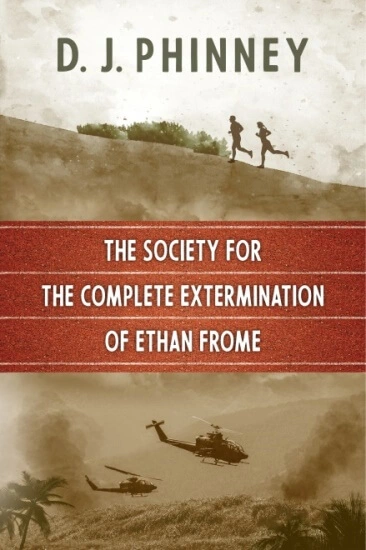
WHAT DO YOU SEE AS THE MOST IMPORTANT ROLE OF HISTORY? DO YOU THINK THAT WE HAVE ENOUGH OF A SENSE OF IT IN TODAY’S SOCIETY?
History is how we learn from our mistakes, and to quote George Santayana, those who cannot remember the past are condemned to repeat it. I am concerned we’re not remembering our past. Further, when our collective past is sliced and diced into one-thousand different narratives, we have no sense of who we are as individuals or as a society, and we are ripe for validation rackets.
YOU CALL YOUR GENRE “RED CAR NOIR.” FROM WHERE DOES THIS NAME COME? WHAT CAN A READER EXPECT FROM A RED CAR NOIR NOVEL?
I wanted a name to brand the novels I’ve written and am writing. I boiled it down to “Southern California-based historical fiction chronicling the dark side of the American Dream,” which is a mouthful. I needed something catchier and shorter. The Red Car reference is to that period of Southern California history (1901-1961) where the Pacific Electric Red Car trolleys ran throughout Los Angeles. A few works extend into the early 1970’s, since the Kennedy Assassination, Vietnam, and Watergate represent the period’s sunset. But the bulk of my work is set within the early 1900’s, an era underrepresented in our literature.
As for “noir,” the genre has both a broad definition and a narrow one, with film-noir being narrower than roman noir or neo-noir. My focus on realism, on the dark side of the American dream, with femmes fatales and protagonists who aren’t detectives but are victimized by a system that is more corrupt than they are, fits within the broad but not the narrow definition. My primary departure from the full-blown film-noir genre is that my self-destructive protagonists don’t usually die or go to prison. Amidst tragedy, they find a sadder-but-wiser resolution with jaded resignation and contentment.
Red Car Noir is more like neo-noir. The movie Chinatown comes to mind. Jake Gittes makes it out of Chinatown, but with scars.
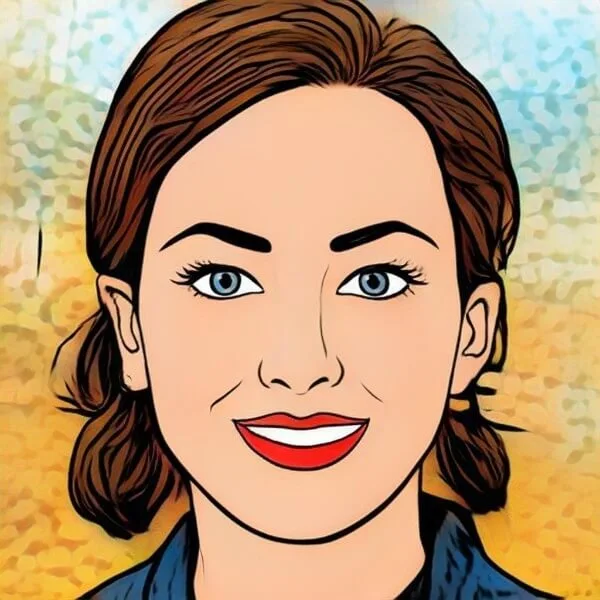
Emma’s love for romance novels knows no bounds. She believes in the magic of love stories and can’t wait to share her favorite heartwarming reads with you.


